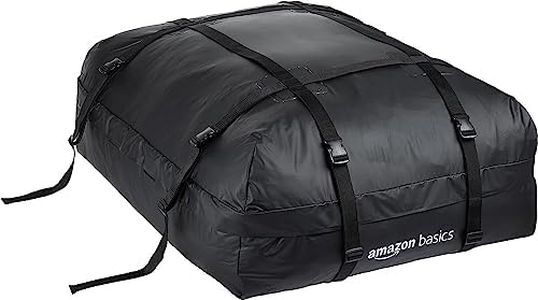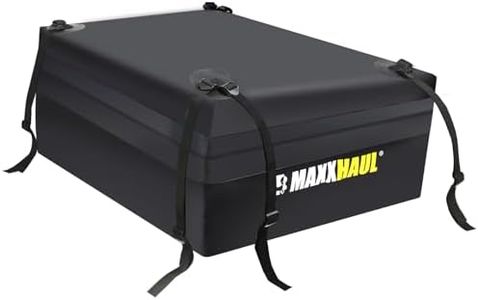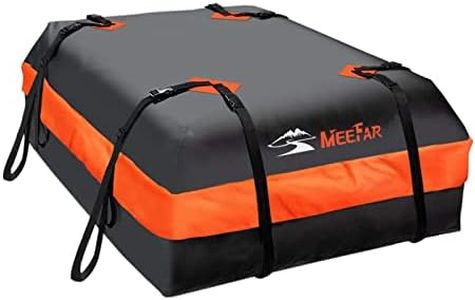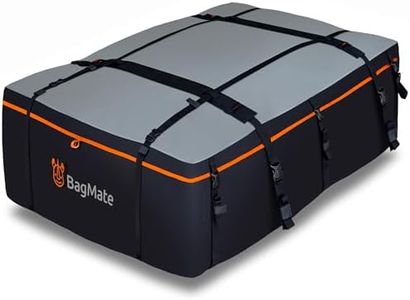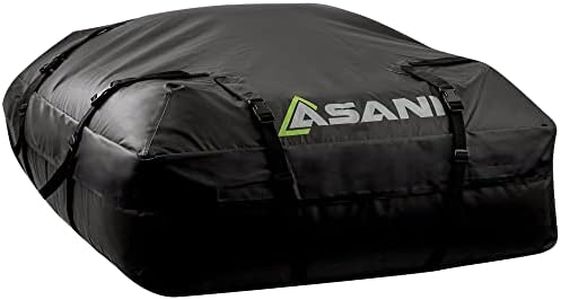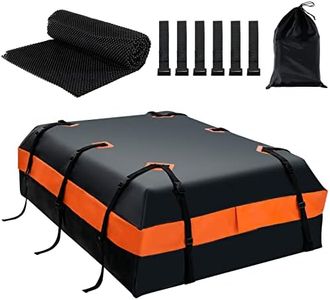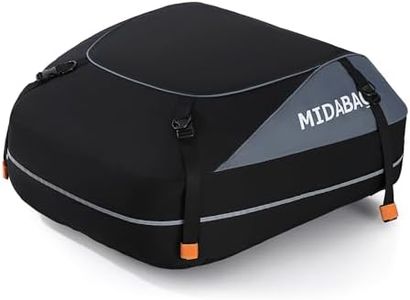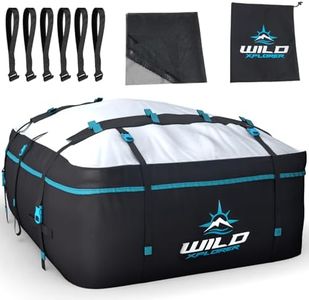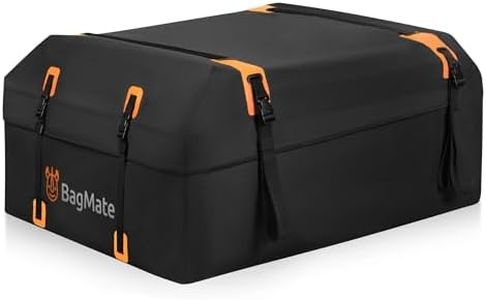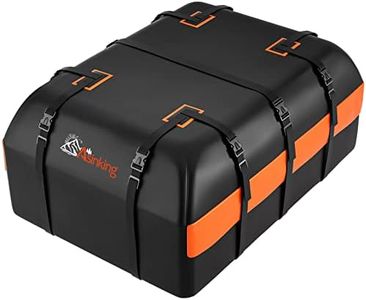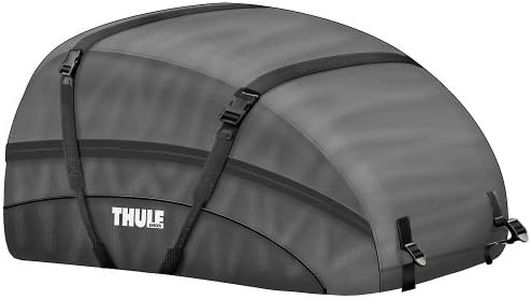We Use CookiesWe use cookies to enhance the security, performance,
functionality and for analytical and promotional activities. By continuing to browse this site you
are agreeing to our privacy policy
10 Best Car Top Cargo Carriers
From leading brands and best sellers available on the web.Buying Guide for the Best Car Top Cargo Carriers
Car-top cargo carriers are a practical solution for anyone needing extra storage space when traveling by car. Choosing the right carrier can make your trips more comfortable and secure while protecting your belongings from the elements. The best approach is to consider how much gear you need to carry, what type of items you’ll transport, and how often you’ll use the carrier. It's important to match the carrier not only to your vehicle but also to your travel habits and packing preferences to ensure convenience, safety, and longevity.Capacity (Volume)Capacity refers to how much gear or how many items the carrier can hold, usually measured in liters or cubic feet. This is important because you don’t want a carrier that’s too small for your needs or unnecessarily large, which can add wind resistance and be harder to manage. Small carriers (under 12 cubic feet) are suitable for a couple’s luggage or a few sports items, while medium carriers (12–16 cubic feet) fit typical family road-trip needs. Large carriers (over 16 cubic feet) are ideal for big families or longer vacations with lots of gear. Consider your regular packing needs and choose a capacity that slightly exceeds them, but avoid picking a carrier so big that it makes maneuvering your vehicle difficult.
DimensionsDimensions describe the length, width, and height of the carrier, and they determine whether it will fit both your car’s roof and your luggage. Long, narrow carriers are good for skis or snowboards, while wider models fit larger suitcases or odd-shaped items. Always measure your vehicle’s roof and think about the size of items you plan to carry. Be sure the carrier doesn’t block access to your trunk or overhang the windshield, and check your vehicle’s roof load limits.
Mounting SystemThe mounting system is how the carrier attaches to your car’s roof. Some need specific roof racks or crossbars, while others can mount on bare roofs with special clamps. It’s essential because a poor fit can be unsafe or hard to use. If your car already has a roof rack, look for a carrier that’s compatible. If not, consider a universal mounting system. Choose a system that’s secure, easy to install, and simple to remove, especially if you plan to take the carrier on and off regularly.
Material and WeatherproofingMaterial and weatherproofing describe what the carrier is made of—typically hard plastic (rigid) or heavy-duty fabric (soft)—and its ability to keep water, dust, and road grime out. Hard carriers usually give better weather protection and security but are heavier and bulkier. Soft carriers are lighter and can be stored more easily when not in use, but may let in some water during heavy rain. If you frequently travel in wet or harsh weather or need extra security, opt for a hard-shell, waterproof model. For occasional fair-weather trips and light packing, a soft-sided carrier may be sufficient.
Security FeaturesSecurity features include locks and reinforced zippers or latches that keep your belongings safe from theft. This is important if you will leave your car unattended with the carrier loaded. Some carriers come with built-in locks, while others can be secured with a padlock. If you often travel to busy areas or need to park overnight, look for strong locking mechanisms. If you mostly use the carrier in low-risk places, basic closures may be enough.
Ease of AccessEase of access refers to how you open and load the carrier—for example, whether it opens from one side, both sides, or the rear. This matters because it affects how conveniently you can pack and unpack your gear, especially in tight spaces. Side-opening carriers make it easy to reach all corners, while rear openings are safer on roadsides. If your travel involves lots of loading and unloading, or you’ll often be parked close to walls or other vehicles, choose a carrier that allows access from the most convenient direction.
AerodynamicsAerodynamics describes how easily the carrier moves through the wind while driving. Carriers with streamlined, low-profile shapes reduce wind resistance, which can help with fuel efficiency and reduce noise. If you plan for long highway trips or want a quieter ride, look for a sleek, aerodynamic design. If these factors aren’t a priority for you—such as for occasional, short trips—this may be less important.
